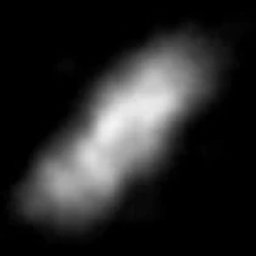its long but its beautiful

Thalassa is one of the moons of Neptune, the eighth and farthest known planet from the Sun in our solar system
Discovery and Naming:
Thalassa was discovered on August 26, 1989, by the Voyager 2 spacecraft during its flyby of Neptune. It was initially designated as "S/1989 N 5" before being officially named Thalassa after the sea nymph in Greek mythology.
Orbital Characteristics:
Thalassa orbits Neptune at an average distance of about 50,074 kilometers (31,125 miles) from the planet's center.
It follows a prograde, nearly circular orbit around Neptune, which means it orbits in the same direction as the planet's rotation.
The moon completes one orbit around Neptune in approximately 0.31 Earth days (7.5 hours).
Physical Features:
Thalassa is a relatively small moon, with an estimated diameter of about 108 kilometers (67 miles).
Its surface is believed to be composed mainly of water ice, along with rocky material.
The exact composition and geological features of Thalassa remain largely unknown due to the limited data available.
Relation to Neptune's Rings:
Thalassa is one of the seven moons of Neptune known to be involved in maintaining the integrity of Neptune's narrow rings. These moons, collectively called shepherd moons, help confine the ring particles within specific regions through their gravitational influence.
Exploration:
Thalassa has only been observed closely by the Voyager 2 spacecraft during its flyby of Neptune in 1989. Consequently, our knowledge of this moon is limited to the data collected during that encounter.
3 Comments
Create an account or Login to write a comment.